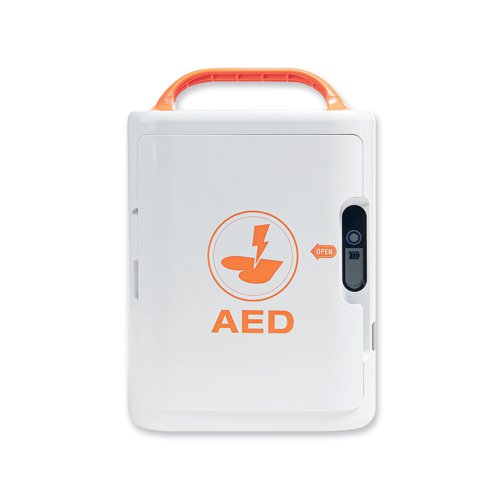

Anything can change in a heartbeat. A sudden cardiac arrest (SCA) can happen to anyone of any age, at any time, and having quick, easy access to a defibrillator (AED) can mean the difference between life and death. Is your school prepared?
When used in conjunction with immediate CPR, an automated external defibrillator increases the chances of surviving an SCA by up to 70% and can be used by anyone in the time leading up to an ambulance arriving. Chest compressions and rescue breaths alone are rarely enough to restart a heart, which is where an AED comes in. We’re here to debunk some common misconceptions:
Myth 1: SCA doesn’t happen in schools
Sudden cardiac arrest occurs when an electrical malfunction of the heart causes it to suddenly stop beating. It can happen anywhere, at any time and can affect adults and children, regardless of their general health. A victim’s best chance of survival depends on immediate CPR and a rescuer with an automated external defibrillator (AED). Defibrillation within 3 to 5 minutes of collapse leads to survival rates of up to 70%.
Myth 2: We’re OK, we’ve already got a defibrillator
If a pupil, member of staff or visitor suffers an SCA incident, every minute counts. Having access to an AED within 3 to 5 minutes of collapse leads to survival rates of up to 70%. For every minute that passes without defibrillation, the chances of survival decrease by 7-10%. Having one AED is great ... but can you get to it and back to the victim quickly enough? Depending on the size of your premises (indoor and outdoor), you may need multiple defibrillators.
Myth 3: We can’t afford the expense
Getting the right equipment may seem costly when school budgets are under such strain. Our finance partners will offer you a cost-effective lease finance solution to make investing in the AEDs your school needs affordable.
Myth 4: We don’t have anyone trained in operating an AED
The AEDs we supply provide step-by-step instructions to support you throughout the rescue. Real-time feedback technology guides rescuers on the optimal rate and depth of chest compressions through voice, text, and visual prompts, ensures the correct application of pads, and automatically delivers a shock when needed. Whilst it can benefit your first-aiders to learn the ropes, truly anyone can operate an AED in an emergency.
Having an AED on site sends a message that you take your school community’s and visitors' safety seriously. Added peace of mind fosters a supportive environment where pupils, teachers and staff feel valued and cared for. When we feel secure in our surroundings, we’re more likely to be focused, productive, and engaged. You can buy AEDs and accessories here or contact us for your personalised product, support and finance package.






